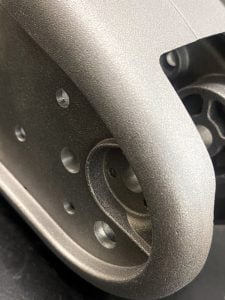Published - 16th Sep 2020
The process of die casting was first conceived in the 1800’s. Over the past two centuries the process has undergone significant development and, today, is the manufacturing method of choice for myriad products used in a wide range of applications. Pressure die casting lends itself extremely well to mass-production and is used to manufacture all kinds of items that we rely on in our daily lives from parts of motor vehicles to children’s toys.
in a wide range of applications. Pressure die casting lends itself extremely well to mass-production and is used to manufacture all kinds of items that we rely on in our daily lives from parts of motor vehicles to children’s toys.
Pressure die casting is a reliable, quick and cost-effective manufacturing method for high volume metal components. The process works by injecting molten metal alloy under high pressure into a tool. As the metal solidifies, it forms a net-shaped component which is ejected from the tooling.
This is established in 4 basic steps:
Pressure die casting can be used with multiple non-ferrous material types, the most common types are: aluminium, magnesium, copper and zinc.
Here at Investacast, we can offer a wide range of different casting materials, some of the most commonly used for pressure die casting are: AZ91, LM24, LM2, LM6, ADC12, A380 and Mazak. Of course, there are many more which we can offer and we welcome you to contact us to find out more.
Pressure die casting will lend itself to companies/people looking for low unit price, excellent repeatability, thin wall sections, exceptional high quality and accuracy.
With our many years of experience and with our qualified engineers in both the UK and overseas we can offer pressure die casting solutions for a range of industry sectors, accompanied by the full range of post-casting services, encompassing machining and finishing solutions.
If you would like further information about the content of this blog or to understand more about our casting capabilities, please contact Investacast +44 (0)1271 866200 or email [email protected].
If you have a project, talk to our experienced sales team
Contact us